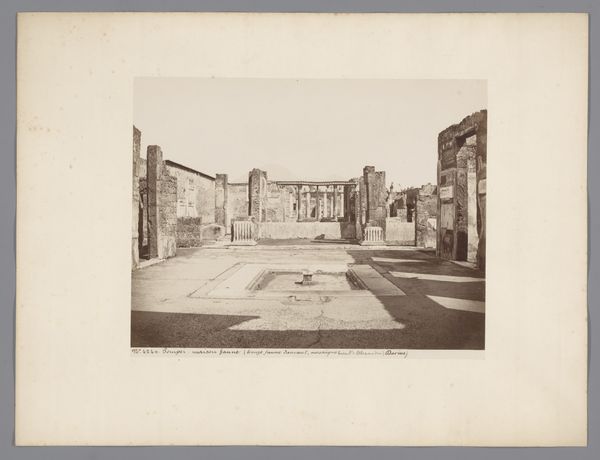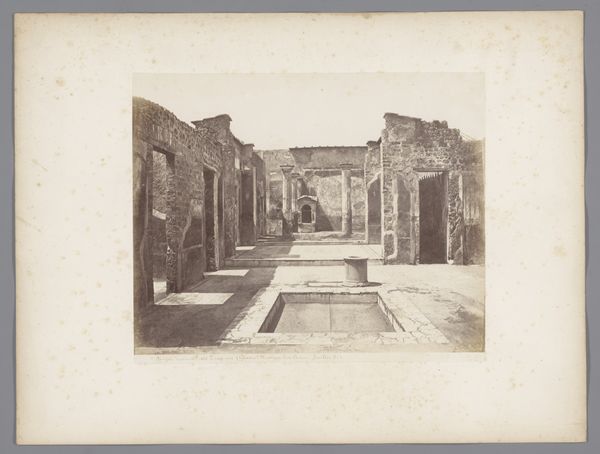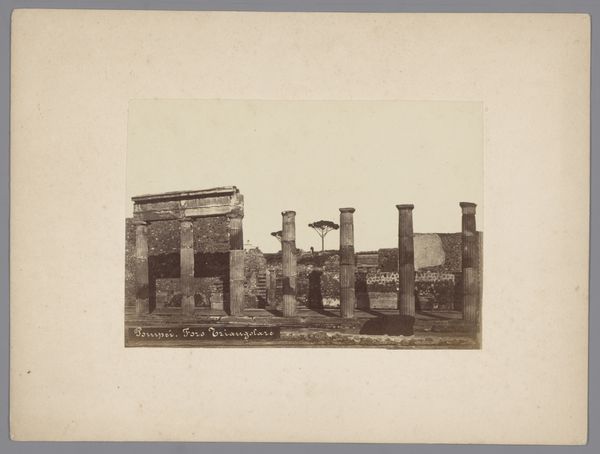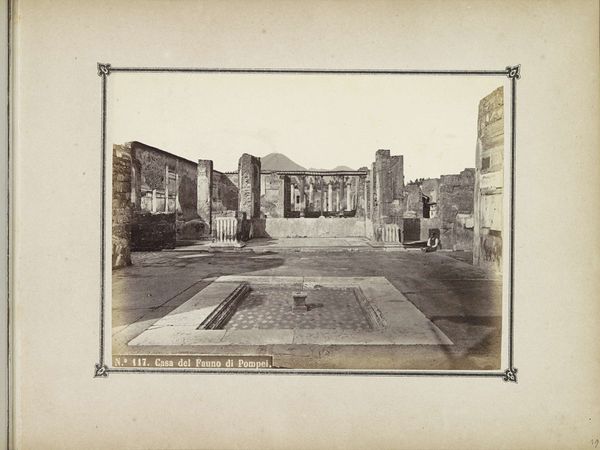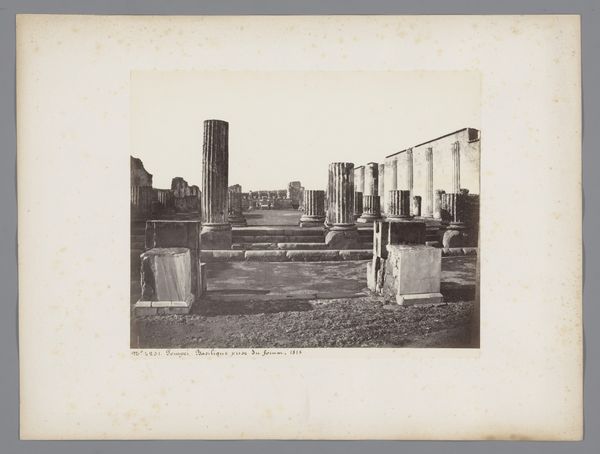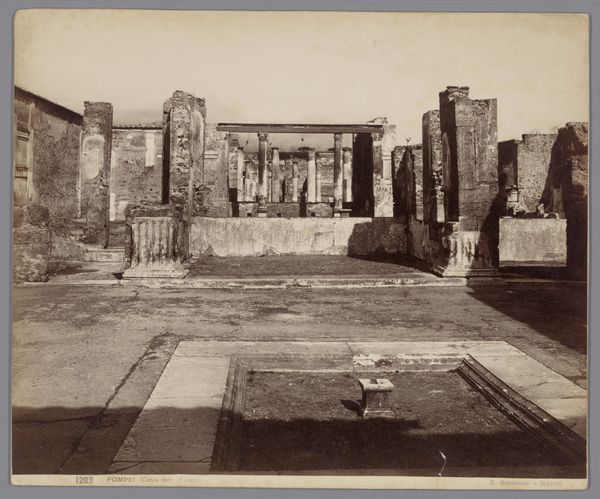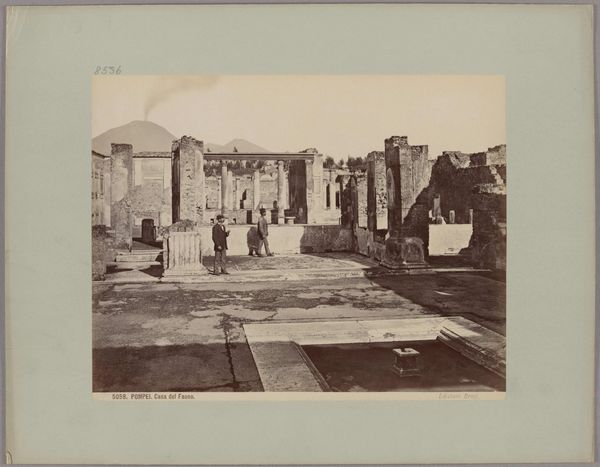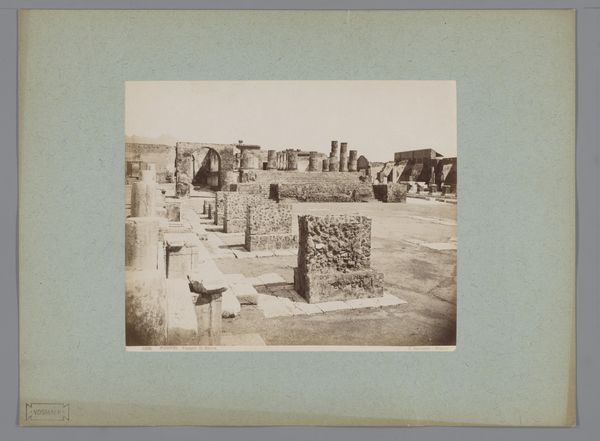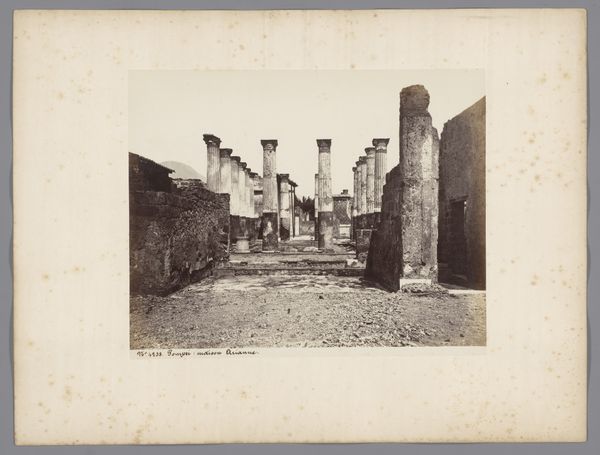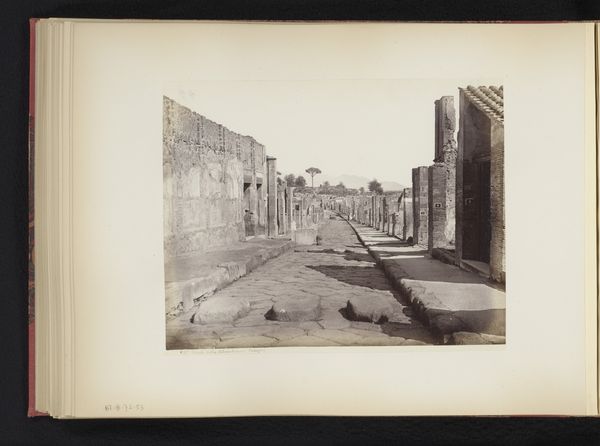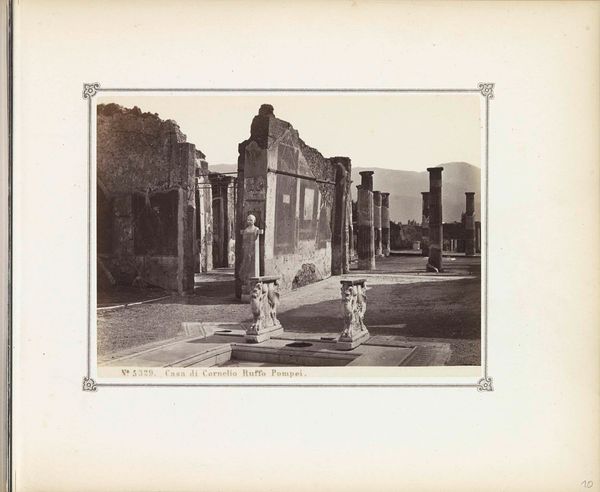
print, photography, site-specific, gelatin-silver-print
# print
#
landscape
#
photography
#
ancient-mediterranean
#
site-specific
#
gelatin-silver-print
#
history-painting
Dimensions: height 319 mm, width 480 mm
Copyright: Rijks Museum: Open Domain
Curator: Giorgio Sommer's gelatin silver print, taken between 1857 and 1875, captures the "Restanten van het Huis van de Faun te Pompeï"—the remains of the House of the Faun in Pompeii, currently held in the Rijksmuseum collection. Editor: The sheer silence in this image is palpable. The somber tonality and geometric forms hint at tragedy, but also speak of an enduring geometry. The way the light rakes across the fractured architecture is also compelling. Curator: Indeed, the contrast plays a significant role. Note how Sommer utilizes the play of light and shadow to emphasize the remaining architectural structure: columns, walls, even what seems to be the remnants of an impluvium. Editor: Yes, the composition directs our gaze deliberately through the ruins. What stands out to me is the implied decadence. Though ruined, we can imagine the original space as a display of wealth and power— now mute relics overtaken by nature. What stories do you see in these walls? Curator: The faun, the mythical half-human, half-goat creature so often associated with abandon and revelry in Roman culture, would be a powerful symbol. Its placement within this house speaks volumes about the priorities and perhaps even the fate, of its inhabitants. We are faced with clear, repeated lines: horizontal demarcations dividing floors or levels, and the vertical insistence of the ruined columns. Do these structural decisions play on meaning? Editor: Absolutely. The House of the Faun suggests much more than just revelry; it alludes to a world of mythology intertwined with the everyday, almost as if myth shaped its reality, and perhaps predetermined its demise. Note also how the presence of Vesuvius looms distantly. It functions almost like a persistent omen. Curator: An intriguing interpretation. Sommer’s placement indeed gives that symbolic weight to the mountain, framing the site’s significance both within its own context, and with regard to natural history. We must remind our visitors that photography was still a relatively novel art form during this time; what modern associations might people apply now, compared to Sommer’s intended goal? Editor: It’s a potent visual elegy to lost grandeur and a vanished way of life—captured with remarkable detail, both architecturally and psychologically. I find myself wanting to know what other memories lie buried beneath the visible planes. Curator: A thoughtful point on which to end; thank you. This photograph provides layers for us to contemplate, certainly.
Comments
No comments
Be the first to comment and join the conversation on the ultimate creative platform.
